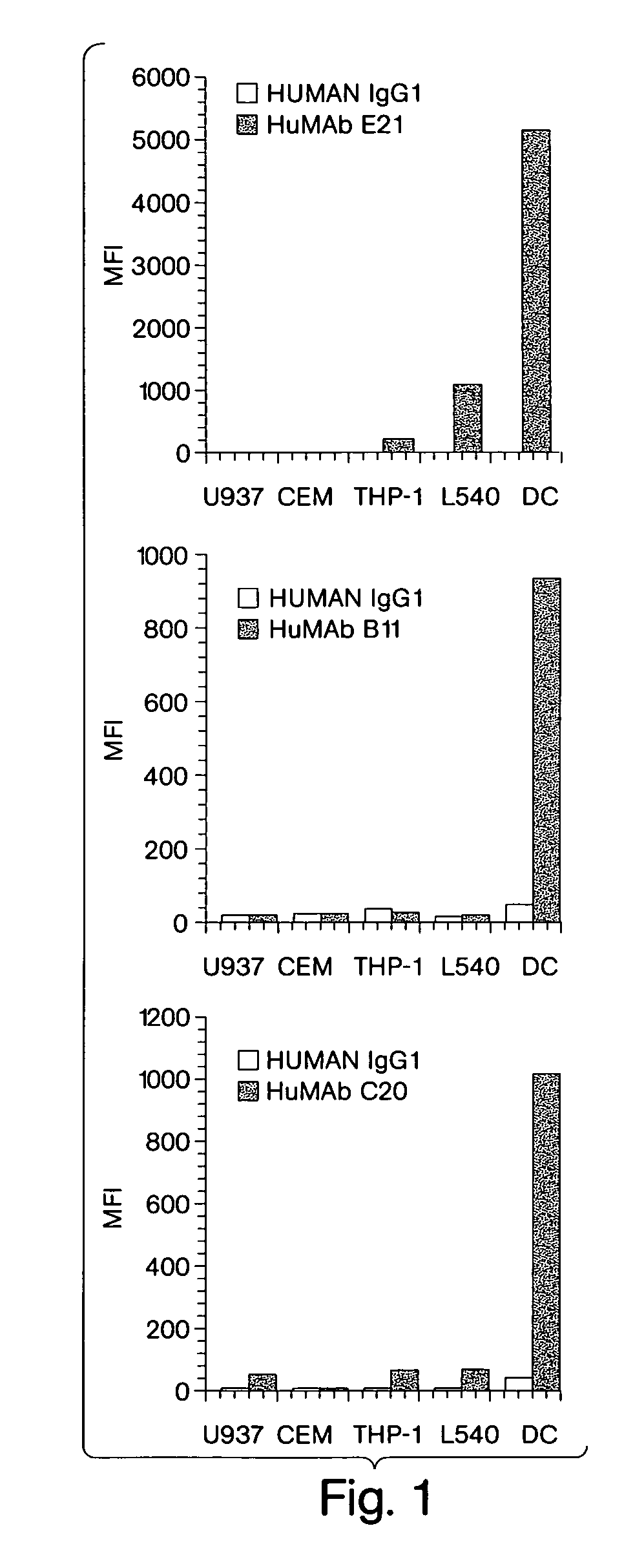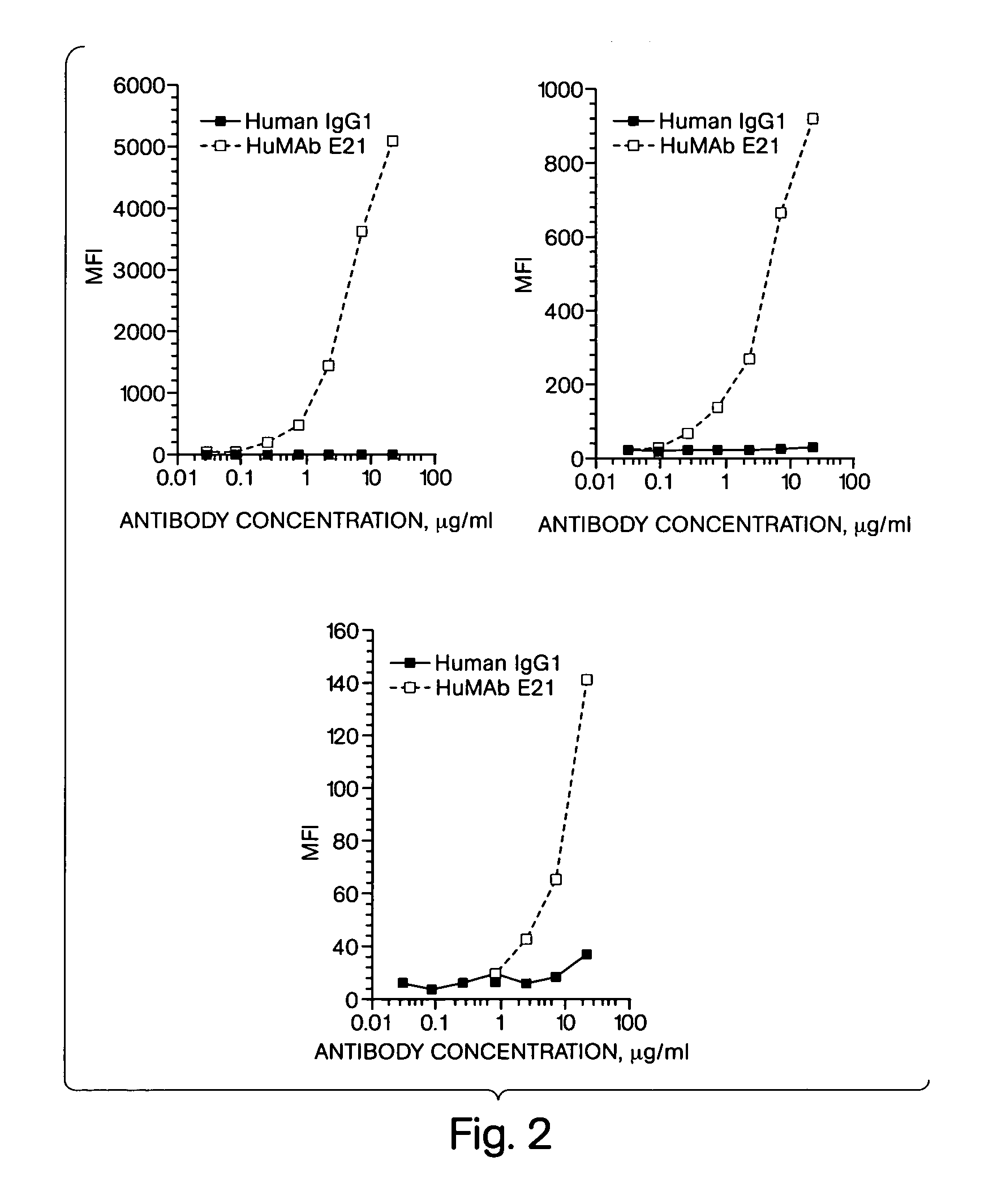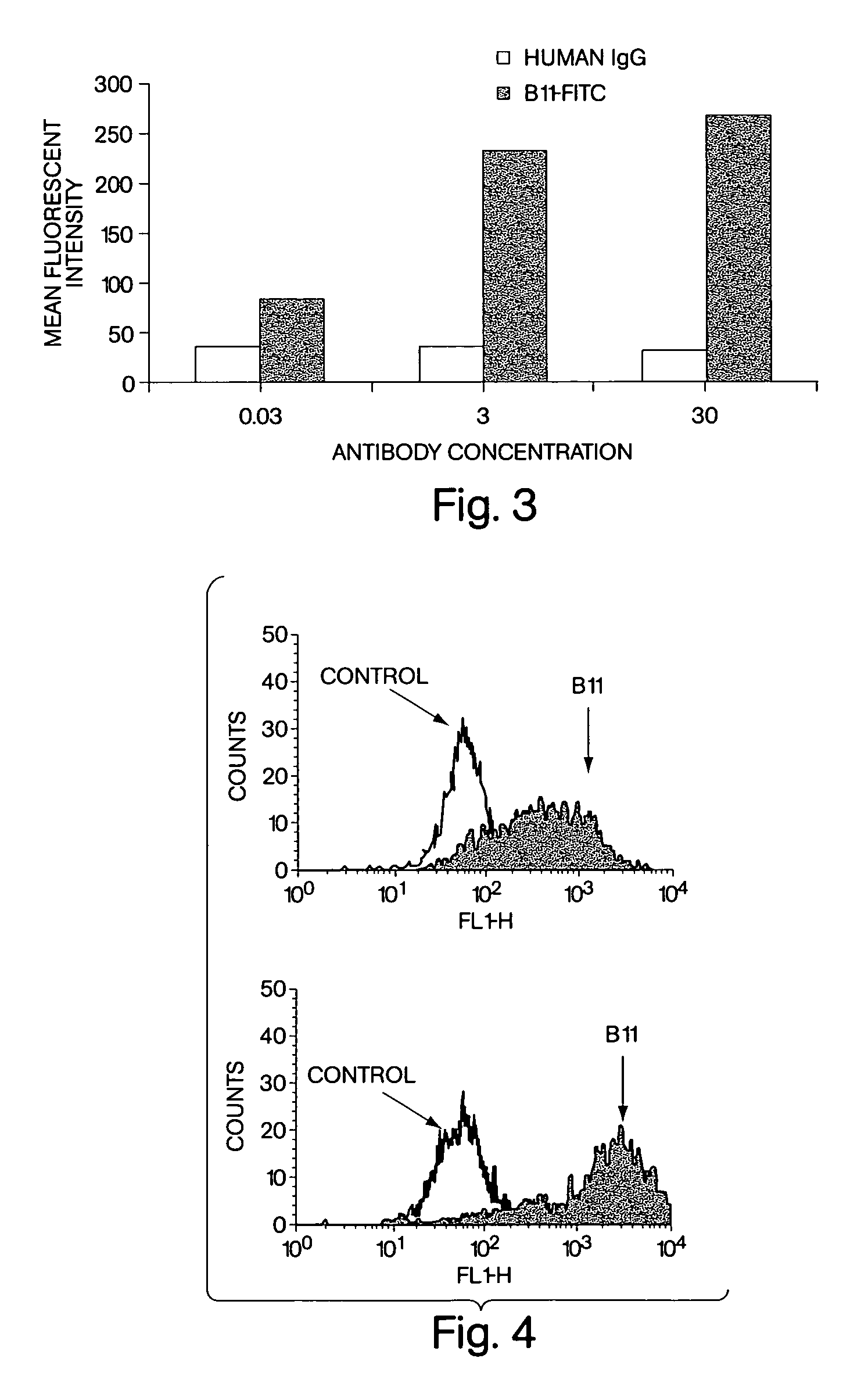Human monoclonal antibodies to dendritic cells
a technology of dendritic cells and monoclonal antibodies, which is applied in the direction of immunological disorders, drug compositions, peptides, etc., can solve the problems of limited reagents available, and achieve the effect of inhibiting growth and/or mediating phagocytosis
- Summary
- Abstract
- Description
- Claims
- Application Information
AI Technical Summary
Benefits of technology
Problems solved by technology
Method used
Image
Examples
example 1
Production of Human Monoclonal Antibodies Against Dendritic Cells
[0234]Human anti-dendritic cell monoclonal antibodies were generated by immunizing the HCO7 strain of HuMAb mice with preparations of dendritic cells. HCO7 HuMAb mice were generated as described in U.S. Pat. Nos. 5,770,429 and 5,545,806, the entire disclosures of which are hereby incorporated by reference.
[0235]In particular, HCO7 mice were immunized four times with intraperitoneal injections of human dendritic cells emulsified in Freund's Adjuvant. Briefly, dendritic cells were prepared as follows. Human peripheral blood mononuclear cells (PBMCs) were obtained by density gradient centrifugation of whole blood or Leukopak platelet apheresis preparations. Monocytes were isolated by adherance to tissue culture flasks for two hours, and then differentiated into dendritic cells by incubation with 2 ng / ml GM-CSF and 10 ng / ml IL-4 in macrophage serum free media (Gibco) for 5 to 9 days. Cells for immunizations were used fresh...
example 2
Characterization of Human Monoclonal Antibodies Against Dendritic Cells
I. Binding Specificity of Purified Human Anti-Dedendritic Cell Antibodies to Dendritic Cells
[0241]Several hybridomas that secreted human IgG antibodies with specificity for dendritic cells were subcloned and expanded for purification. Monoclonal antibodies were isolated from supernatants of hybridoma cultures grown in spinner flasks in a humidified incubator containing 5% CO2. Antibodies were purified by chromatography on a Protein A-agarose column according to the manufacturer's specifications (Pierce, Rockford Ill.).
[0242]The purified human antibodies were then tested for reactivity with dendritic cells and cell lines representing various other hematopoetic cell types using flow cytometry. Briefly, dendritic cells were prepared from adherent mononuclear cells by culturing for 5-7 days in media supplemented with GM-CSF and IL-4, as described above. The U937, CEM, THP-1 and L540 cell lines were cultured in media ...
example 3
Characterization of B11 Target Antigen
I. Immunoprecipitation of the Human Monoclonal Antibody B11-Target Antigen from Dendritic Cells
[0270]Human monoclonal antibody B11 was used to immunoprecipitate its cognate target antigen from dendritic cells.
[0271]Briefly, cell lysates from dendritic cells were prepred and incubated with monoclonal antibody B11 or an isotype control IgG antibody at 4° C. Antibody-antigen complexes were captured with anti-human IgG-agarose, and separated by SDS polyacrylamide gel electrophoresis.
[0272]A band corresponding to a molecular weight of approximately 180 kilodaltons was evident in antibody B11 immunoprecipitates from two different preparations of dendritic cell lysates, but not in the control sample. Accordingly, these immunoprecipitation studies showed that human monoclonal antibody B11 recognizes a target antigen on dendritic cells with an approximate molecular weight of 180 kilodaltons, as analyzed by SDS-PAGE.
II. N-terminal Sequencing of the Human ...
PUM
| Property | Measurement | Unit |
|---|---|---|
| concentration | aaaaa | aaaaa |
| temperature | aaaaa | aaaaa |
| pH | aaaaa | aaaaa |
Abstract
Description
Claims
Application Information
 Login to View More
Login to View More - R&D
- Intellectual Property
- Life Sciences
- Materials
- Tech Scout
- Unparalleled Data Quality
- Higher Quality Content
- 60% Fewer Hallucinations
Browse by: Latest US Patents, China's latest patents, Technical Efficacy Thesaurus, Application Domain, Technology Topic, Popular Technical Reports.
© 2025 PatSnap. All rights reserved.Legal|Privacy policy|Modern Slavery Act Transparency Statement|Sitemap|About US| Contact US: help@patsnap.com



